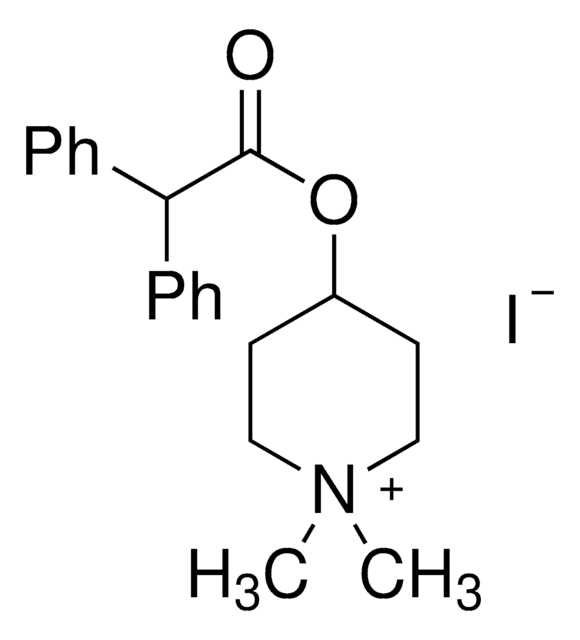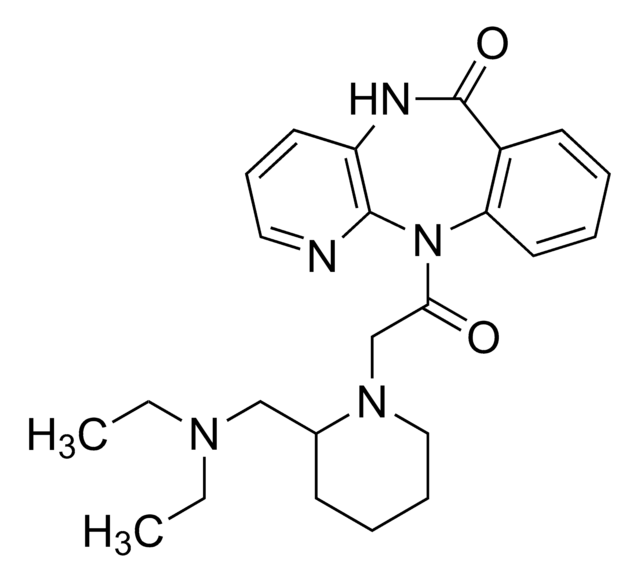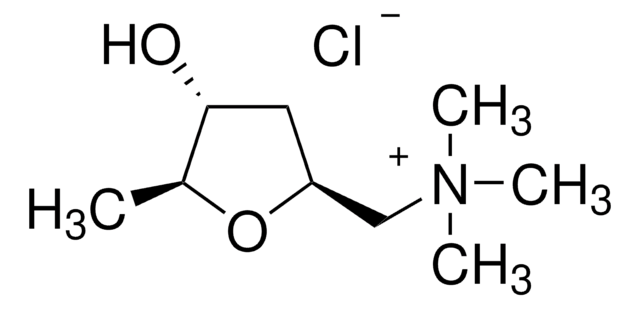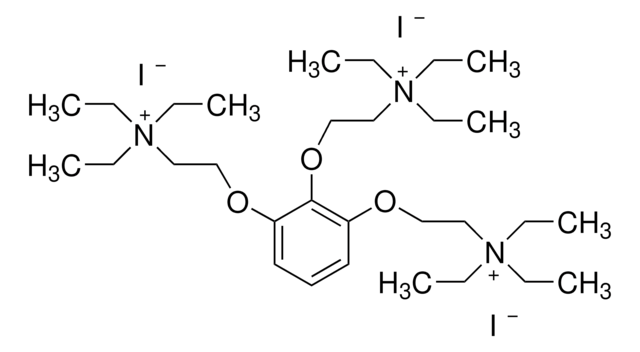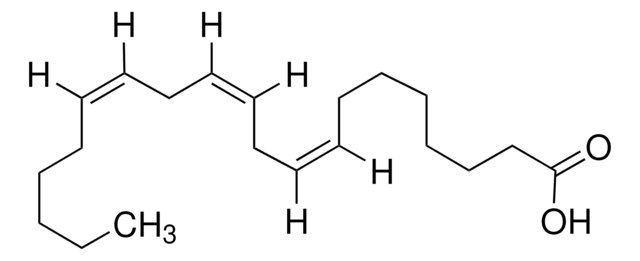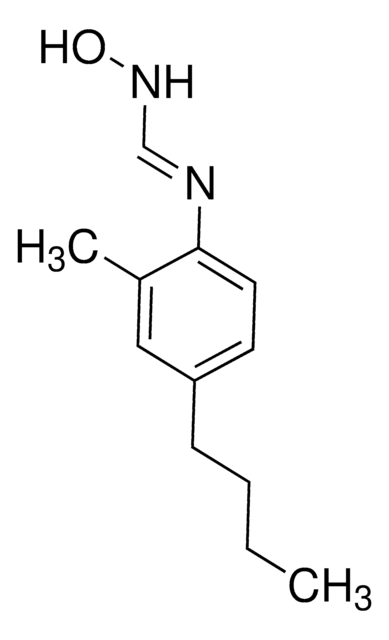H127
p-Fluorohexahydro-sila-difenidol hydrochloride
powder, ≥98% (HPLC)
Sinonimo/i:
Cyclohexyl-(4-fluorophenyl)-(3-N-piperidinopropyl)silanol hydrochloride, P-F-HHSiD hydrochloride
About This Item
Prodotti consigliati
Livello qualitativo
Saggio
≥98% (HPLC)
Stato
powder
Colore
white to beige
Solubilità
H2O: slightly soluble 1.5 mg/mL
45% (w/v) aq 2-hydroxypropyl-β-cyclodextrin: >14 mg/mL
ethanol: soluble
Stringa SMILE
Cl[H].O[Si](CCCN1CCCCC1)(C2CCCCC2)c3ccc(F)cc3
InChI
1S/C20H32FNOSi.ClH/c21-18-10-12-20(13-11-18)24(23,19-8-3-1-4-9-19)17-7-16-22-14-5-2-6-15-22;/h10-13,19,23H,1-9,14-17H2;1H
JMTYYLMGSBSPPK-UHFFFAOYSA-N
Informazioni sul gene
human ... CHRM3(1131)
Applicazioni
- as the M3/muscarinic acetylcholine receptor antagonist to study its involvement in carbachol induced Egr-1 biosynthesis using human neuroblastoma cells
- as M3 receptor antagonist to test its involvement on N,N-diethyl-m-toluamide (DEET)-induced angiogenesis in human umbilical venous endothelial cells (HUVEC)
- in a study to examine the role of aclidinium on human fibroblast to myofibroblast
Azioni biochim/fisiol
Caratteristiche e vantaggi
Codice della classe di stoccaggio
11 - Combustible Solids
Classe di pericolosità dell'acqua (WGK)
WGK 3
Punto d’infiammabilità (°F)
Not applicable
Punto d’infiammabilità (°C)
Not applicable
Dispositivi di protezione individuale
Eyeshields, Gloves, type N95 (US)
Scegli una delle versioni più recenti:
Possiedi già questo prodotto?
I documenti relativi ai prodotti acquistati recentemente sono disponibili nell’Archivio dei documenti.
Il team dei nostri ricercatori vanta grande esperienza in tutte le aree della ricerca quali Life Science, scienza dei materiali, sintesi chimica, cromatografia, discipline analitiche, ecc..
Contatta l'Assistenza Tecnica.

